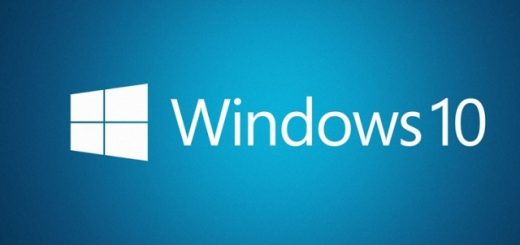How to Install Windows 11 on a PC from Scratch

Prerequisites
- Windows 11 Installation Media: You’ll need a USB drive with at least 8GB of storage and a copy of the Windows 11 installation files. You can download these from the official Microsoft website.
- PC Requirements: Ensure your PC meets the minimum system requirements for Windows 11.
- Backup: Make sure to backup all important data, as the installation process will erase everything on your hard drive.
Step 1 – Create a Bootable USB Drive
Upon completing these steps, you’ll possess a bootable USB drive prepared for a Windows 11 installation. Equipped with this essential tool, you’re now ready to either configure a new system or refresh the operating system on your existing machine.
1. Download the Media Creation Tool
Navigate to Microsoft’s official website and download the Windows 11 Media Creation Tool,This is a free utility provided by Microsoft to create installation media for Windows 11.
2. Insert the USB Drive
Plug your USB drive into an available USB port on your computer. Make sure the drive is empty or that you’ve backed up any important data, as the process will erase all existing files on the drive.
3. Run the Media Creation Tool
Locate the downloaded Media Creation Tool and run it. You may need administrative privileges to execute this application.
4. Accept the License Terms
Upon launching the tool, you’ll be presented with Microsoft’s license terms. Read through them and click “Accept” to proceed.
5. Choose Media Type
The tool will ask whether you want to upgrade your current system or create installation media for another PC. Select “Create installation media (USB flash drive, DVD, or ISO file) for another PC.”
6. Select Language and Edition
You’ll be prompted to choose the language, edition, and architecture for Windows 11. If you’re unsure, the tool can use the settings for the PC you’re currently on. Click “Next” once you’ve made your selections.
7. Choose the Media to Use
Select “USB flash drive” as your media type. The tool will download the necessary files and write them to the USB drive.
8. Begin the Creation Process
Click “Next,” and the tool will start downloading the Windows 11 installation files. This may take some time, depending on your internet speed. Once the download is complete, the tool will automatically create a bootable USB drive.
Step 2 – Boot from USB
1. Insert the Bootable USB Drive
Plug the bootable USB drive into an available USB port on your computer. It’s advisable to use a USB port directly on the motherboard, usually located at the back of desktop computers or on the sides of laptops.
2. Restart Your Computer
Once the USB drive is inserted, restart your computer. As it begins to reboot, you’ll need to enter the BIOS or UEFI settings.
3. Access BIOS/UEFI Settings
As your computer starts up, you’ll see a splash screen displaying the manufacturer’s logo. During this time, you’ll need to press a specific key to enter the BIOS or UEFI settings. The key varies by manufacturer but is usually one of the following: F2, F12, DEL, or ESC. You should see a message indicating which key to press, such as “Press F2 to enter Setup.”
4. Navigate to Boot Options
Once inside the BIOS or UEFI settings, use the arrow keys to navigate to the “Boot” tab or section. This is where you can change the order of boot devices.
5. Change Boot Order
In the Boot Options, you’ll see a list of devices your computer can boot from. Use the designated keys (usually displayed at the bottom or side of the screen) to move the USB drive to the top of the list. This action sets the USB drive as the first boot device.
6. Save and Exit
After setting the USB drive as the first boot device, save your changes and exit the BIOS or UEFI settings. Your computer will restart.
7. Boot from USB
Upon restarting, your computer should now boot from the USB drive. You’ll see a Windows logo and a loading indicator, followed by the Windows 11 installation screen.
8. Confirm Language and Preferences
Once the installation screen appears, you’ll be prompted to select your language, time format, and keyboard input method. Make your selections and click “Next” to proceed with the installation.
Step 3: Install Windows 11
1. Start the Installation
After booting from the USB drive, you’ll be greeted with the Windows 11 installation screen. Here, you’ll need to select your language, time and currency format, and keyboard input method. Once selected, click “Next.”
2. Click “Install Now”
On the next screen, you’ll see an “Install Now” button. Click on it to proceed. The setup will prepare the necessary files for installation.
3. Enter Product Key (Optional)
If you have a Windows 11 product key, you’ll be prompted to enter it on the next screen. If you don’t have one, you can click “I don’t have a product key” to proceed. However, you’ll need to enter a valid product key later to activate Windows 11.
4. Accept License Terms
You’ll be presented with the Microsoft Software License Terms. Read through them carefully, and if you agree, check the box that says “I accept the license terms.” Then, click “Next.”
5. Choose Installation Type
On the following screen, you’ll have two options: “Upgrade” and “Custom.” Since you’re installing from scratch, select “Custom: Install Windows only (advanced).”
6. Partition Hard Drive
You’ll see a list of drives and partitions on your computer. If you’re installing Windows 11 on a new drive, you’ll likely see “Unallocated Space.” Select it and click “New” to create a new partition. If you’re reinstalling or replacing an existing installation, you may need to delete the old partitions and create new ones.
Note: Deleting partitions will erase all data on them, so make sure you’ve backed up important files.
7. Begin Installation
After creating the partition, select it and click “Next.” The installation process will begin. Your computer will copy and install the necessary files, which may take some time.
8. System Reboots
During the installation, your computer will reboot a couple of times. Do not remove the USB drive until the installation is complete.
9. Complete Initial Setup
After the final reboot, you’ll be guided through the initial setup process. This involves choosing your region, setting up a network connection, and creating or signing in with a Microsoft account.
10. Customize Settings
You’ll have the option to customize various settings related to privacy, Cortana, and more. Make your selections based on your preferences.
11. Finalize Installation
Once you’ve customized your settings, Windows 11 will finalize the installation. You’ll then be taken to the desktop, signaling that the installation is complete.
Step 4: Complete the Setup
1. Choose Your Region
Upon the first boot after installation, you’ll be asked to select your region. Make your selection from the dropdown list and click “Yes” to confirm.
2. Select Your Keyboard Layout
Next, you’ll be prompted to choose the keyboard layout you wish to use. Select your preferred layout and click “Yes.”
3. Add a Second Keyboard Layout (Optional)
You’ll have the option to add a second keyboard layout. If you don’t need a second layout, simply click “Skip.”
4. Connect to a Network
You’ll be prompted to connect to a Wi-Fi network. This is optional but recommended for immediate updates and account setup. Select your network and enter the password, or click “I don’t have internet” to proceed without connecting.
5. Sign In or Create a Microsoft Account
If you’re connected to the internet, you’ll be prompted to sign in to a Microsoft account. This is optional but provides access to various Microsoft services and cloud features. If you don’t have an account, you can create one at this stage.
6. Create a Local Account (Optional)
If you prefer not to use a Microsoft account, you can create a local account. Click “Offline account” at the bottom left of the screen and follow the prompts.
7. Set Up a PIN
Whether you chose a Microsoft account or a local account, you’ll be asked to set up a PIN for quicker sign-ins. Follow the on-screen instructions to create your PIN.
8. Customize Privacy Settings
You’ll be presented with various privacy settings related to location, diagnostics, and data sharing. Read through each option and toggle the switches based on your preferences.
9. Configure Cortana (Optional)
If available in your region, you’ll have the option to set up Cortana, Microsoft’s virtual assistant. You can enable or disable this feature based on your preference.
10. Final Configurations
Windows will now go through its final setup procedures, which may include downloading updates and finalizing settings. This may take a few minutes.
11. Welcome to Windows 11
Once the setup is complete, you’ll be taken to the Windows 11 desktop. You can now start installing applications, transferring files, and customizing your system as you see fit.
I hope this guide proves helpful for those looking to install or reinstall Windows 11. Each step is designed to be straightforward and easy to understand, ensuring a smooth installation process.
Check out our other Windows 11 procedures.




2 Responses
[…] If you are looking for our install-from-scratch procedure, check out this page. […]
[…] enhancements. Ubuntu is available for download as an ISO file, which you can use to create a live boot USB or install it on your PC, Mac, or virtual […]